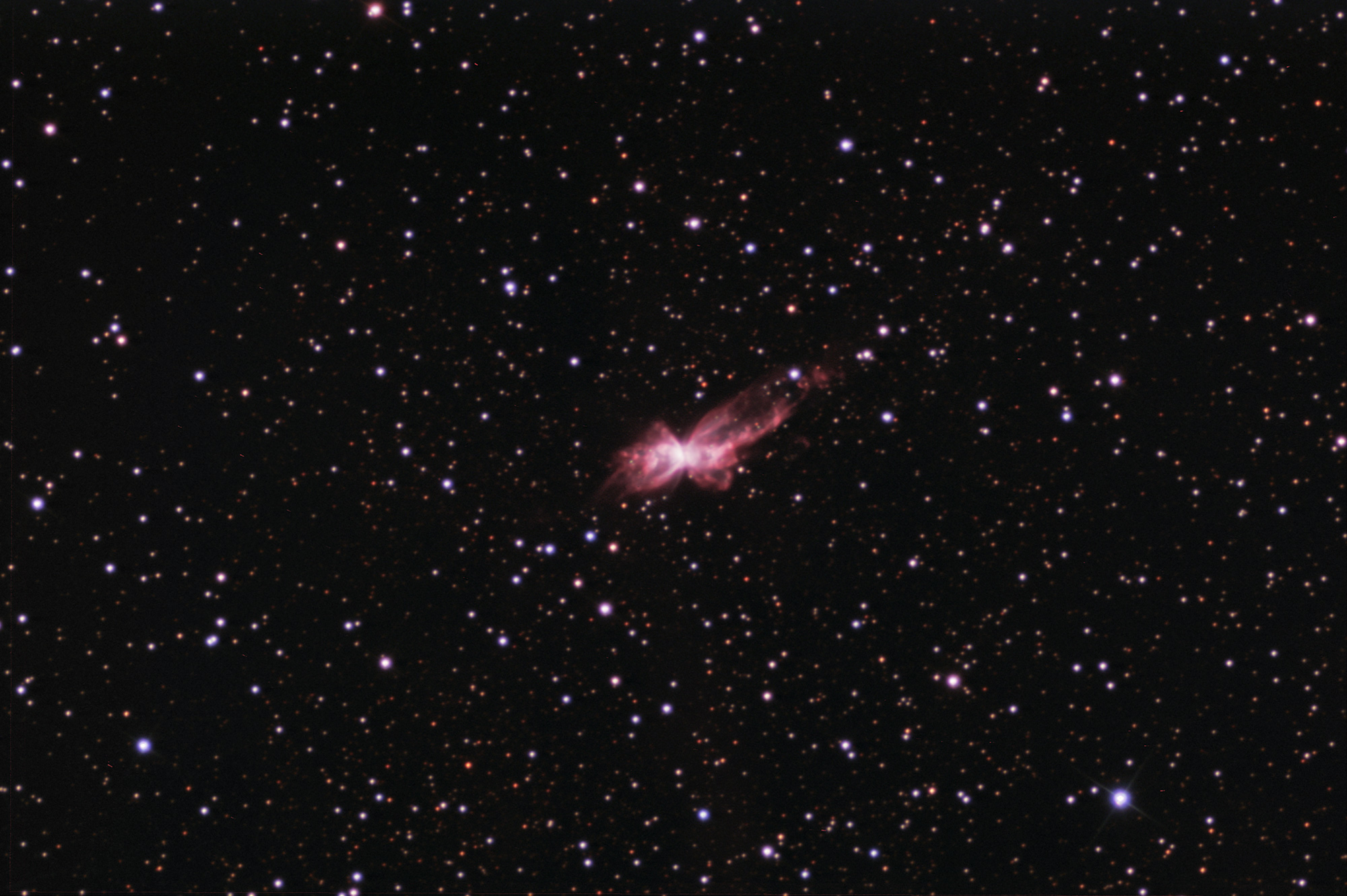
Click here for a full resolution crop of the Hydrogen Alpha
| Catalogue and alternative designations |
NGC 6302, Bug nebula, Butterfly nebula, Caldwell 69 |
| Type | Planetary Nebula |
| Position | 17 13.7, -37 06 |
| Constellation | Scorpius |
| Camera and Telescope | STL6303E and 36.8 cm Ritchey Chretien |
| Focal Ratio | F9 |
| Exposure Details | HaLRGB (synthetic luminance) 240:60:60:50:60with Astrodon series 2 filters |
| Description | This
description is taken from
Wikipedia:
NGC 6302 (also called the Bug Nebula, Butterfly Nebula, or Caldwell 69) is a bipolar planetary nebula in the constellation Scorpius. The structure in the nebula is among the most complex ever observed in planetary nebulae. The spectrum of NGC 6302 shows that its central star is one of the hottest stars in the galaxy, with a surface temperature in excess of 200,000 K, implying that the star from which it formed must have been very large. The central star, a a white dwarf, was only recently discovered , using the upgraded Wide Field Camera 3 on board the Hubble Space telescope. The star has a current mass of around 0.64 solar masses. It is surrounded by a particularly dense equatorial disc composed of gas and dust. This dense disc is postulated to have caused the star's outflows to form a bipolar structure similar to an hour glass. This bipolar structure shows many interesting features seen in planetary nebulae such as ionization walls, knots and sharp edges to the lobes. NGC 6302 is of magnitude 9.6 and about 1.5' x .5' in size. This image is a full resolution crop.
|